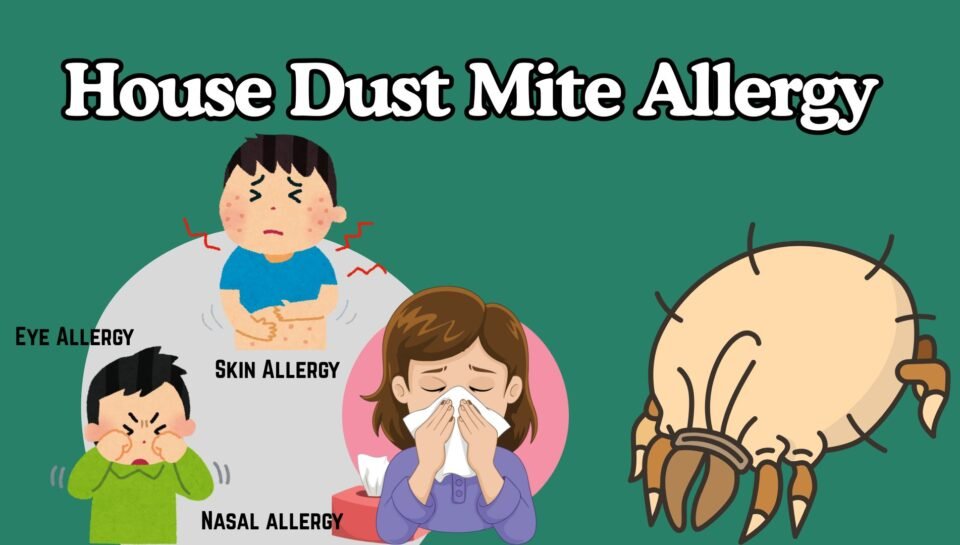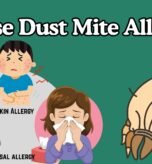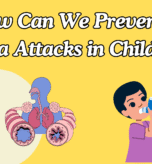House dust mites are the most common cause of respiratory and skin-related allergies in children as well as adults, all across the globe. Though invisible to the naked eye, house dust mites can have a major impact on a child’s health and well-being.
What are House Dust Mites?
House dust mites are microscopic arachnids that live in household dust. They thrive in warm, humid environments and are most commonly found in:
- Bedding
- Carpets
- Upholstered furniture
- Curtains
- Stuffed toys
These mites feed on dead human skin cells, and while they don’t bite or sting, their fecal particles and body fragments contain proteins that can trigger allergic reactions in sensitive individuals.
How Common is House Dust Mite Allergy?
House dust mite allergy affects up to 30% of children worldwide. Sensitization in tropical countries with humid climates can be as high as 50%. It is known as the most common indoor allergen in Asian countries.
House dust mites grow in hot and humid climates, thus tropical countries have higher house dust mite loads. Moreover, urban cities around the world are witnessing a surge in house dust mite allergy cases due to poor ventilation, indoor pollution, and use of synthetic bedding.
What are the Clinical Manifestations of House Dust Mite Allergy?
House dust mites usually cause multi-system allergies in children. Allergic symptoms may start from one system (respiratory, skin, or eye) and then progress to involve other systems depending on the degree and frequency of exposure to the mites.
House dust mite-sensitized individuals usually have all-year-round symptoms, thus tremendously impacting the child’s quality of life.
1. Allergic Rhinitis
- Persistent nasal itching, runny nose, sneezing, and nasal blockages.
- Some children may experience cough due to sinusitis.
- Chronic issues like enlarged adenoids, sleep-related breathing problems, and facial changes may develop.
2. Asthma
- Children with HDM allergy are at higher risk of developing asthma.
- Frequent episodes of cough, wheezing, and breathlessness — especially during humid weather.
- Asthma may become severe and harder to control with regular medications.
3. Atopic Dermatitis (Eczema)
- HDM sensitization correlates with more severe and persistent eczema.
- Children may have dry, itchy skin all year round with frequent flare-ups requiring steroid creams.
- Chronic skin changes like scaling, lichenification, and color changes are common.
4. Eye Allergy or Vernal Keratoconjunctivitis
- Children may have itchy, watery eyes, frequent blinking, and photophobia (light sensitivity).
- Chronic cases may cause corneal changes that affect vision.
How Can We Prevent House Dust Mite Allergy in Children?
Allergen Avoidance
House dust mites thrive in upholstery and mattresses where dust accumulates. Here are some preventive steps:
- Sun-dry mattresses and pillows for 4 hours followed by vacuuming.
- Regular vacuum cleaning of upholstered areas in the house.
- Wet mopping of floors instead of dry sweeping to reduce dust.
- Wash and sun-dry bedsheets and pillow covers every 2–3 days.
- Use hypoallergenic mattress and pillow covers.
- Avoid carpets, upholstered bed backs, and soft furnishings.
- Keep soft toys away or wash and sun-dry them regularly.
- Keep rooms well ventilated and control humidity.
Treatment for House Dust Mite Allergy
1. Managing Allergic Conditions
- Use anti-allergy medications (topical and oral antihistamines).
- Inhaled corticosteroids for asthma and nasal sprays for nasal allergies.
- Moisturizers and anti-inflammatory ointments for skin allergies.
- Lubricating and antihistamine eye drops for eye allergy control.
2. Allergen Immunotherapy (AIT)
- AIT is the only potential disease-modifying treatment option for HDM allergy.
- It can be administered sublingually (under the tongue) or via subcutaneous injections (allergy shots).
- Recommended for severe or persistent cases not controlled by medications.
- AIT may help prevent asthma development in children with allergic rhinitis.
Conclusion
House dust mite allergy can significantly affect a child’s quality of life, but with proper prevention, management, and treatment, symptoms can be controlled effectively. Regular cleaning, allergen avoidance, and consultation with a child allergy specialist can help your child lead a healthier, allergy-free life.




